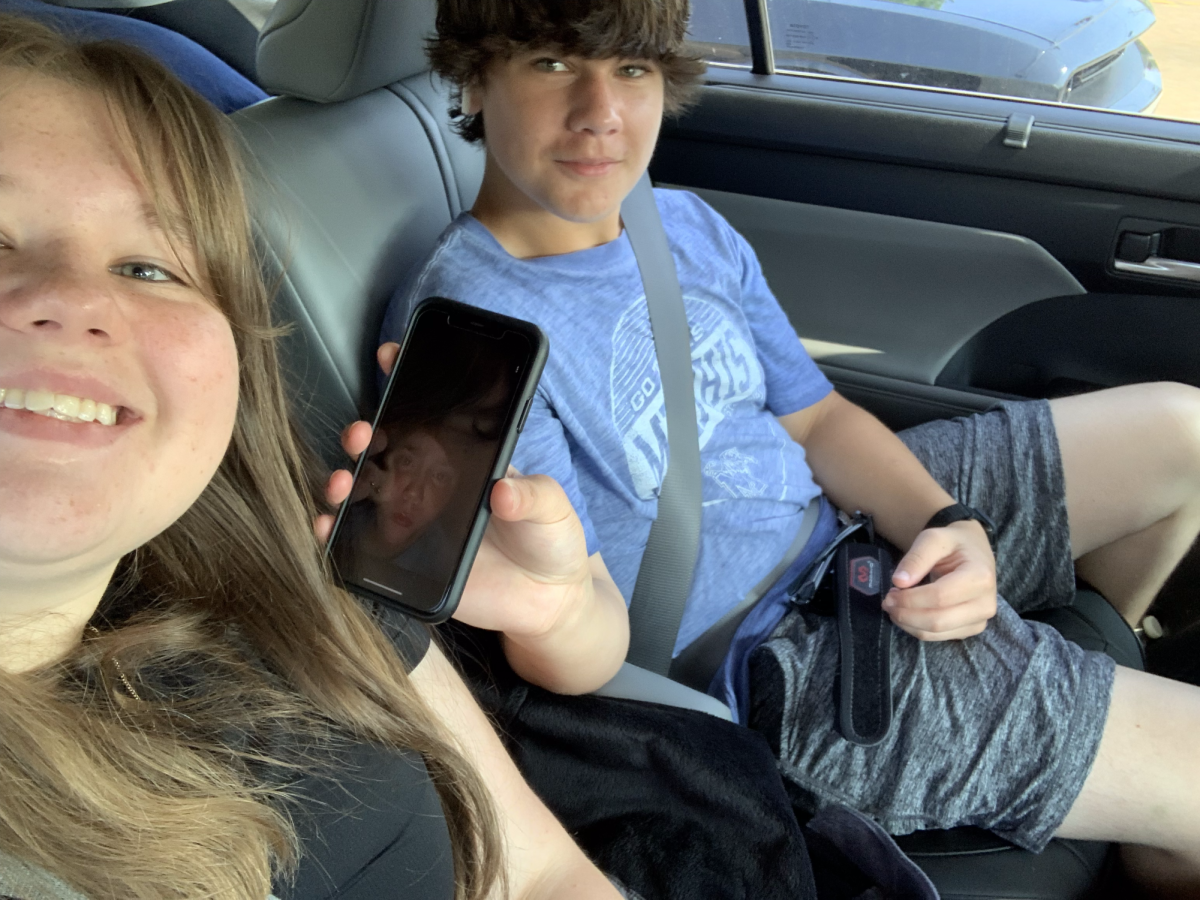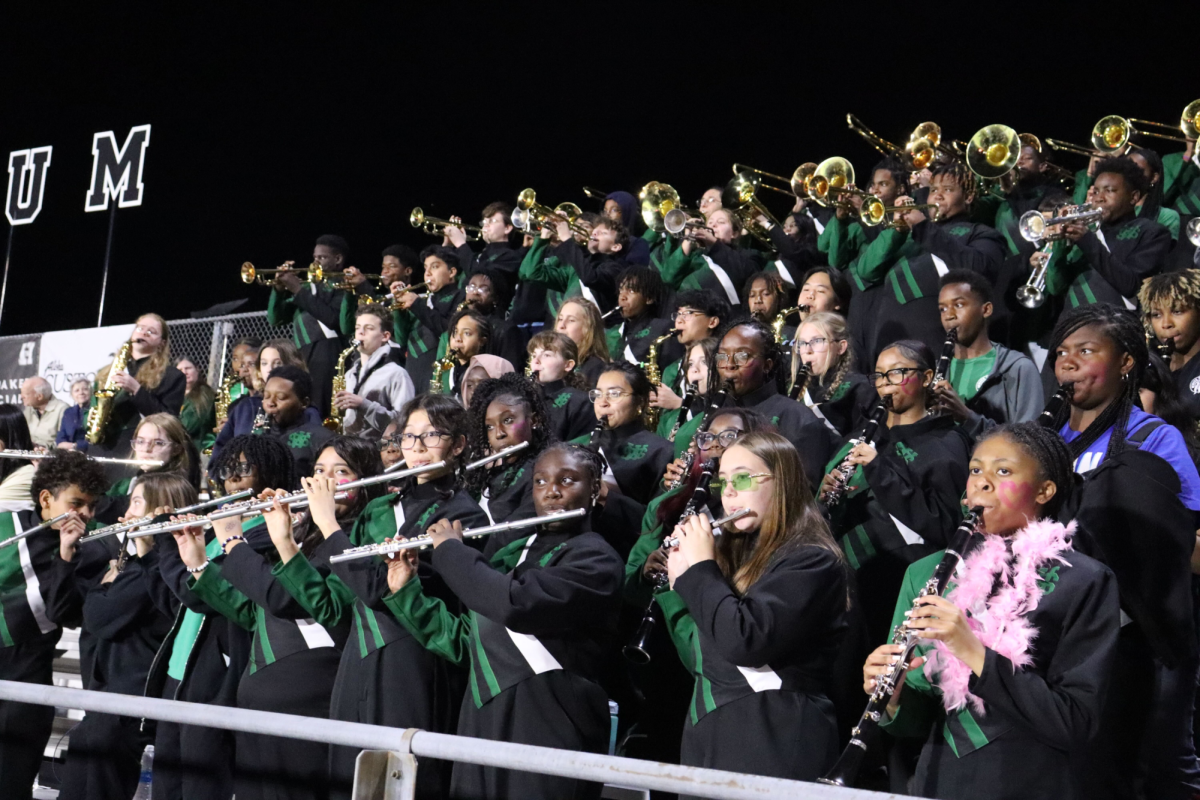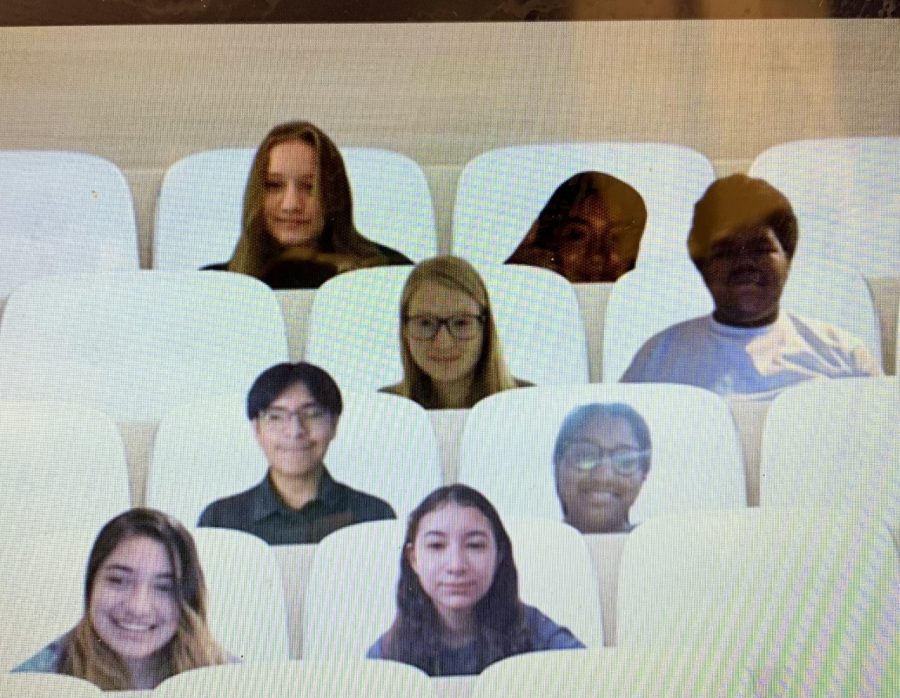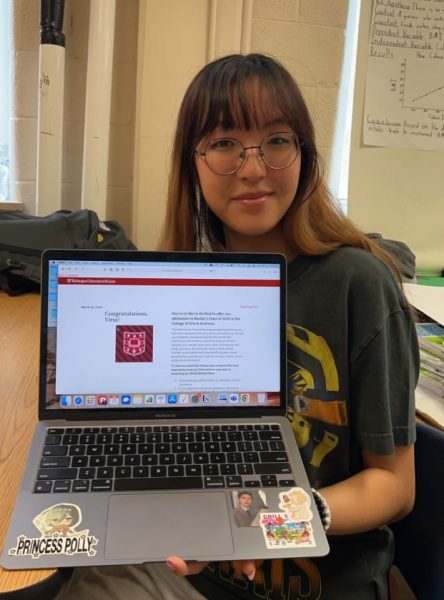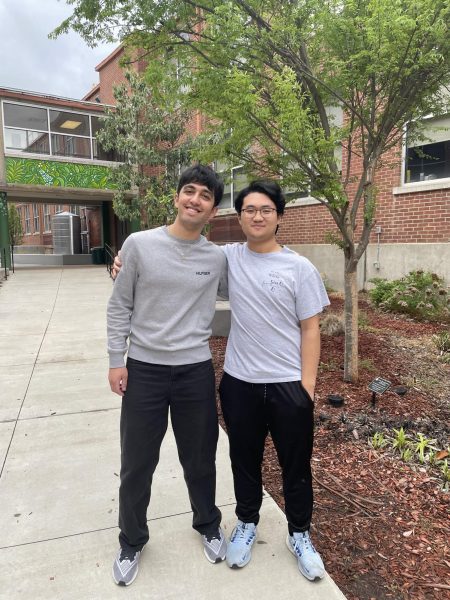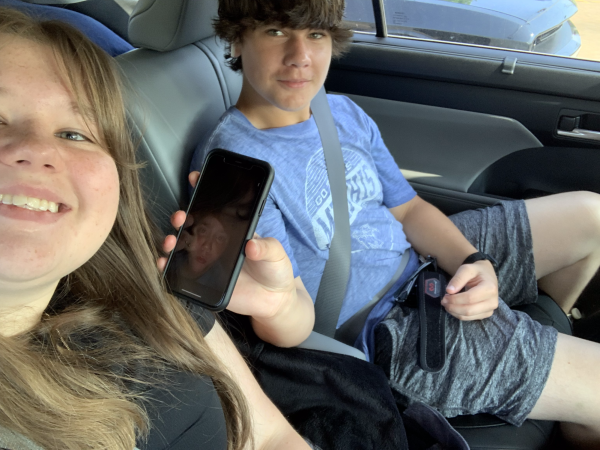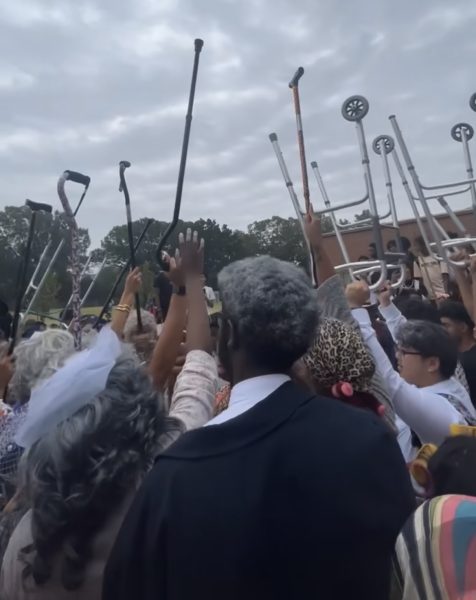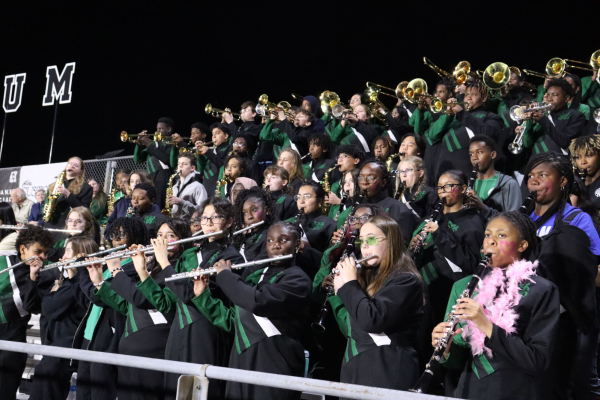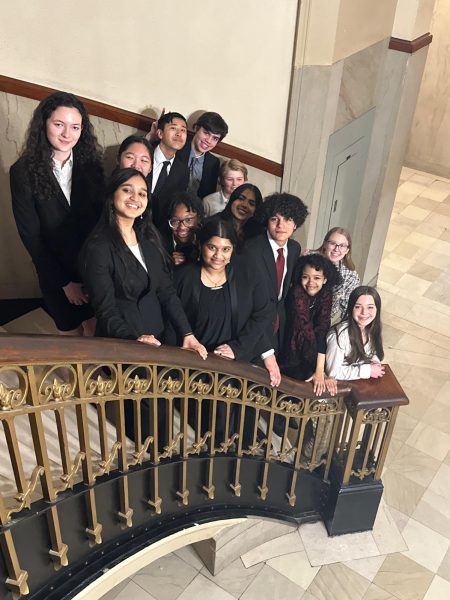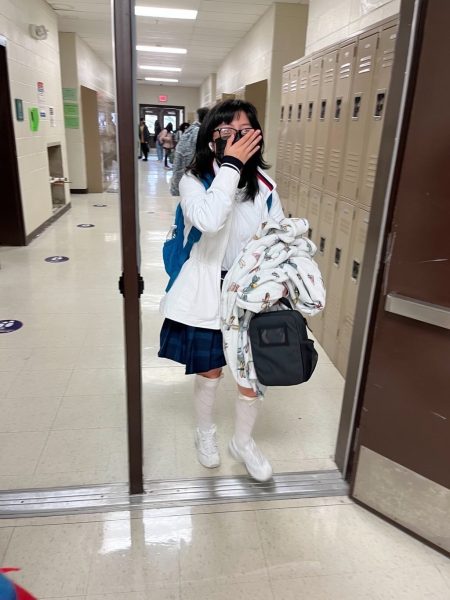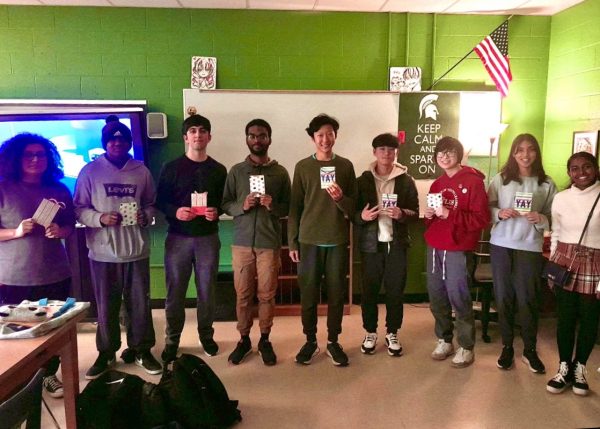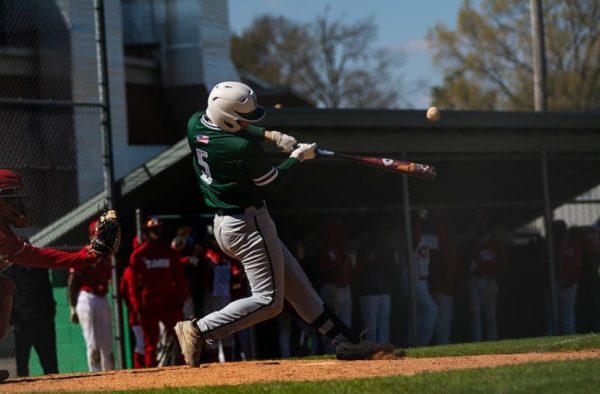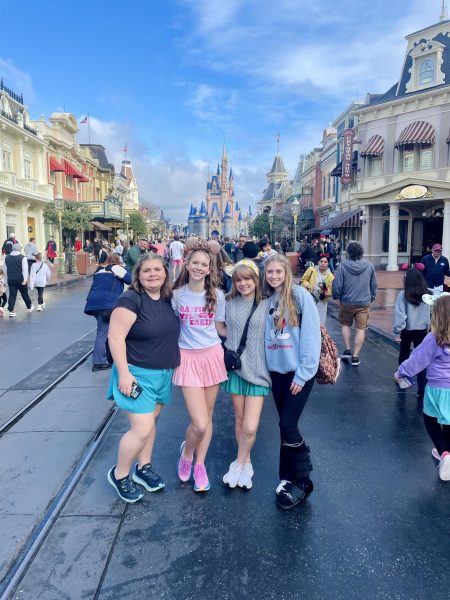Teachers find creative ways to engage online students
French III students pose for a photo in their virtual classroom. Since school went online, teachers like Melissa Seagraves have had to find creative ways to engage students.
COVID-19 and the transfer to online school tested the adaptability of both students and teachers. A partial return to school has tested it further, with teachers now responsible for both online and in-person students.
Before the pandemic hit, teachers usually counted on good engagement with students through things such as small groups and one-on-one teaching. Teachers got to know students more personally and help them with their work in a way that best suited the individual student; online school has strained that. For many teachers, reaching that previous level of engagement has been difficult.
“I feel like a lot of us are multitasking when we’re in virtual learning,” French 1, 2, and 3 teacher Melissa Seagraves said. “If you’re in a class and a teacher’s giving a lecture, it can be easy to start work for another class. So I’m worried that students are missing part of the instruction that they really need and are finding it difficult to be successful.”
Seagraves has found creative ways to engage students using online resources such as Kahoot, GoFormative and Flipgrid. The breakout rooms featured on Microsoft Teams have also been very useful in place of small group class discussions. The partial return to school has also given her the ability to engage one-on-one with students, even if only a few are actually present, as well as gauge progress with assignments.
“For my part, I like having students in the classroom because I can check in and see where they are with an activity and gauge my think time,” Seagraves said. “Especially if it’s just me sitting there, I’ll ask a question thinking that someone should be able to respond immediately. But when I have a student next to me, it makes me more patient.”
Ann Newhouse, a ninth grade CLUE teacher, has also found engaging ways to teach online students. Newhouse prefers to keep things simple in her classroom, adopting a lecture-based style of learning and games like Kahoot to make learning more fun. For in-person students, she tries to connect with them more personally and help them out as much as possible.
“[I am] just looking at them, circulating the room, asking if they’d like for me to make copies, engaging with them [and] seeing what’s on their screens,” Newhouse said.
For honors and AP art teacher Charles Berlin, online learning has posed unique challenges, as the subject of art is taught differently than other classes. In a virtual environment, the best way for him to gauge his students’ progress is by having them regularly send photos of their work. Engagement is easier for in-person students though, as he can help students one-on-one and give immediate feedback on work.
“It’s much easier to know if you are engaging students in-person than online,” Berlin said. “The feedback is much more immediate in person. Online presentation is similar to being a D.J. on a radio station. Your audience in many cases may be involved and actively listening or may not be.”
Despite improved learning for many online students, the partial return has posed a number of difficulties. A main challenge for teachers has been rampant technical issues due to the number of people using school Wi-Fi. Many teachers have been unable to share powerpoints, videos, or even come on camera for class. This has somewhat limited the strategies teachers can use to engage students.
“The internet is not working, Teams is often down and so being able to teach virtually like I used to be able to teach virtually is not working as well as I had hoped. That’s the hardest part for me,” Seagraves said. “It’s not so much that the students are here or that I have a lot of fear about students being in the building with me; it’s more or less just the frustration with technology.”
Still, teachers are hopeful for the upcoming months.
“I think this has been hard for everyone, and I think everyone has been trying the very best that they can to engage their students,” Seagraves said. “But I also think that if we haven’t risen to that challenge this year, I think we’ll circle back next year and it’ll be ok.”
Your donation will support the student journalists of White Station High School. Your contribution will allow us to purchase equipment and cover our annual website hosting costs.



